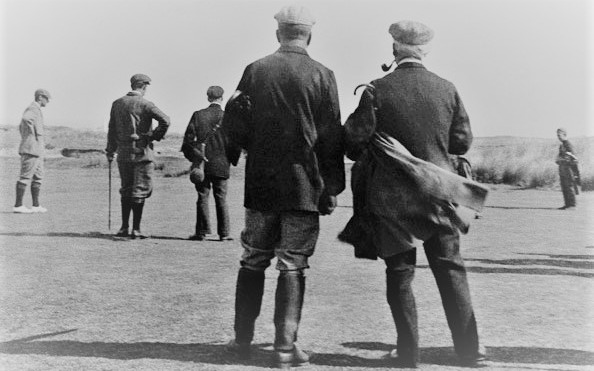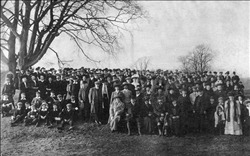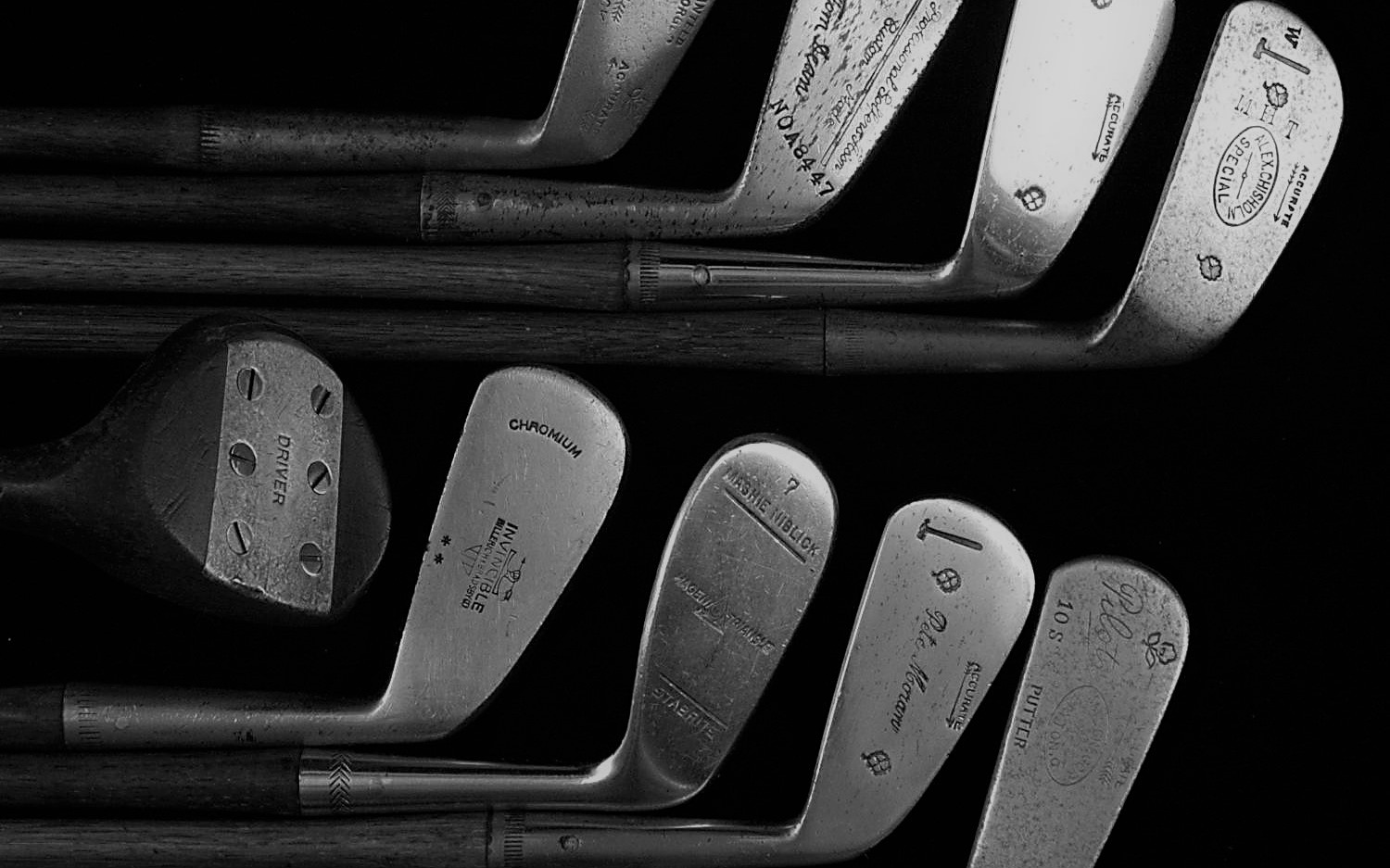History



The first question usually asked about Loudoun Gowf Club is why "Gowf Club"?
It would appear that the Gowf Field of Loudoun, so called as far back as records are available, was the private Gowf field of the Loudoun family and had been in existence from the early sixteenth century. Gowf has been played on these fields for over 400 years. It is believed that this ground has never at any time been under the plough in all these years. One can therefore appreciate why the turf at Loudoun is unique and probably among the finest of any inland course. Indeed, Hampden Park, the legendary home of the Scottish national football team, was returfed from the rough along the road side around 1920.
Formation of Club
On 10th November, 1908, twelve Galston gentlemen met in the library room of the Brown's Institute with a view to resuscitating the, by then, extinct Galston Golf Club. This former club of 9 holes was situated on the Sorn Road roughly west of Cessnock Castle and had been in existence for only a few years around the turn of the century.
The meeting agreed to approach Lord Loudoun with reference to the ground at the Gowf Field in order to form the new Club. The Earl agreed to rent the ground. The expenditure would require 44 Gentlemen, subscription ten shillings and sixpence, 44 Ladies, seven shillings and sixpence and 10 Juveniles, five shillings with similar numbers from Newmilns.
Newmilns responded to the appeal and a Joint Committee was empowered to rent the Gowf field and the first A.G.M. called to which a new Constitution and Local Rules were submitted for a new Club called the Loudoun Gowf Club. The Committee were further instructed to survey the Gowf Field with a view to laying out a nine hole course and to subsequently survey the "Hag Park" from the point of view of forming an 18 hole course.
Agreement with the Earl of Loudoun
Terms were agreed with the Earl of Loudoun and rents of £70 for the Gowf Club and £35 for the Hag Park. One of the conditions of the rent was that should the Club cease to use the ground all fences should be replaced as when they took over and that all bunkers, tees etc., should be levelled off.
This clause is probably the reason why the course exists today as never at any time till 1947 did the club have enough money to replace the fences and return the course to its original condition, so it was in fact cheaper to carry on - even at a loss. Mr. Hydes was engaged to lay out the 18 holes, for which he was subsequently granted an honorarium of £1.1/-. Mr. Robertson of Troon was appointed the first Green keeper at a wage of £1 weekly with liberty “to make and mend clubs and to sell clubs and balls in his spare time.”
It was decided that the fees for members be Gentlemen one guinea, Ladies fifteen shillings (“who may play Mondays, Wednesdays, Fridays at all times but on Tuesday and Thursday till 5p.m. and Saturday till 3p.m.”) Juveniles five shillings subject to the same rules as ladies. Caddies came under the jurisdiction of the Green keeper; Fee 1 Round, 6d.
Many were the trials and tribulations which beset the Club Committees but the members continued to enjoy their golf always putting pressure on committee and green staff for better playing conditions.
Club House
A “shelter” for Ladies and Gentlemen was erected late in 1910 and from this grew the “White House of Loudoun” which continued in use till 1967. One of the first mention of facilities in this shelter is contained in a committee minute; “the committee agreed to purchase 1 brush and comb and 1 clothes brush for the gents and the ladies room" Such were the finances in these days. By this time the club was being financially embarrassed by unpaid subscriptions.
The balance sheet for 1911 shows income of £255 with outgoings of £262 and an overdraft of £107.
World War I
The question of laying out a putting green first arose in 1914 and it was agreed to proceed. Then came World War I and like many small clubs at this time they were in deep trouble financially.
In a flush of patriotism, it was decided to grant all serving members free subscriptions - and then found they had no money. 30 unpaid subscriptions, an overdraft of £10 with £50 rent due for the past half year and £15 Income Tax also due. Various suggestions were discussed such as reducing to 9 holes, allowing cattle to graze, etc., but when a suggestion was made by the agricultural committee of the day that the course should be ploughed, some senior members guaranteed an overdraft of £100 and it was agreed to carry on for the time being.
However, by 1916 the course was let for cattle grazing to save it from the plough and reduced to 9 holes with fenced greens. Little golf was played but the club survived.
The Inter War Years
By 1919 interest in golf was beginning to revive. Thanks to the fact that the rent received from grazing was now twice that paid out to Loudoun Estate the Club was restored to an 18 hole course and reverted to the grazing of sheep only. Between the wars, the Club struggled on, never quite clear of debt and never with much money to spend.
Despite this, improvements were made in the condition of the course. Around 1926 with the closure of Loudoun Hill Golf Course there was an influx of Darvel members which helped to bring more life and money to the Club and which ensured its continuity. This was the position until the advent of World War II and once again the troubles of the previous generation were repeated.
Again the course survived thanks to several big-hearted members who cut fairways and greens. In 1947 a sale of work and gala was held which raised £700 (the most money the Club had ever had to that date). The bulk of this was spent on a corrugated asbestos hut behind the clubhouse and used as a refreshment hut and committee room.
Purchase of the Course
In 1960 the Countess of Loudoun died and with only a year-to-year lease of the course the Club faced a crisis. Death duties would require to be paid and the course was potentially the most suitable land for development. Lady Jean Campbell verbally assured the Club that if the land had to be sold it would only be sold as a golf course. In order to start a fund to buy the course, should it ever go up for sale, a levy of £10 per member, £5 per associate member, payable over 2 years was carried at an extra-ordinary A.G.M. 60 members and 20 associate members immediately resigned leaving 120 members only. The course was opened to visitors and Sunday golf was permitted.
Golf suddenly burst into popularity, members started coming in from Glasgow and surrounding districts. This helped to bolster the Club’s sinking finances and when the course came up for sale in 1964 the Club was in funds to the tune of approx. £5,000. An offer was made by the Club to purchase but this was rejected. However, a year later the course was purchased for £20,000.
Development of the Course
Plans were drawn up for a new clubhouse and further expenditure of around £15,000 was envisaged. A further £6,000 was raised by interest free loans from members and other sources made money available. By 1966 the clubhouse was started, shouldering a debt of around £20,000. In 1967 the new building was opened and in use and within 5 years the premises were found to be inadequate for the 400 members and 100 associates who were now using the course. An extension involving incorporating the Club master's house into the lounge and changing room and the building of a new Club master's house was put in hand at a cost of £25,000 and was formally opened in 1972.
Recent Developments
Since 1974 most expenditure has been of the course itself. There is now a building for machinery, and the many tools and fertilisers used by the green keepers. Tees were expanded at the short holes various, new bunkers were constructed and the planting of trees is now well under way. To date, 2,500 trees have been planted.
In recent years Loudoun Gowf has taken on a new look with trees lining fairways and holes which were straight now having more interesting shapes to them. In general the greens are larger than before but still present fairly small target areas.